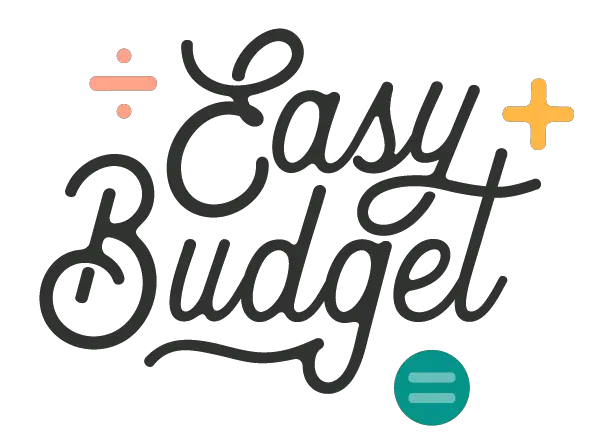This post may contain affiliate links where I earn a commission, at no additional cost to you, if you decide to make a purchase after clicking on a link. Please see our Disclosure Policy for full details. Thank you for your support!
Let’s be honest. We all want to be comfortable with money or even wealthy someday! The most reliable way to do that is through regular and consistent investing, but getting started is totally daunting! There are so many terms to try to understand and it can get confusing. Today, let’s break down some of the barriers you may feel toward investing by helping you understand the most important and basic beginner investing terms!

When I first got started learning about investing in 2016, I literally read through lists of investing terms over and over again until I understood the concepts well enough to repeat them back. Pretty soon, I understood them well enough to act on them!
The same will be true for you! Let’s go over some of these terms and illustrate them in simple terms so we can really get them down.
When you’re done with this short read, you’ll be savvier than ever before and more prepared to invest wisely for your future.
Related reading: Side Hustle Guide: 60+ Ways to Earn Money in 2020

23 BEGINNER INVESTING TERMS TO UNDERSTAND NOW
1. Investing
Investing means putting money into a venture with the expectation of gaining some type of return or benefit from it.
2. Stock
A stock is a type of investment that represents part-ownership of a company, the company that is offering the stock. So if you purchase a stock, you’re purchasing a small part of the actual company, called a share. Every company has a different amount of shares and they are all valued differently. Some shares cost $5 and others cost $1,000, each representing a different tiny portion of the company. Typically you would purchase the stocks of companies that you believe will go up in value. That’s one huge way you can make money through investing!
3. Stock Market
The stock market is simply the market where the trading of corporate stocks between individuals and companies happens!
4. The New York Stock Exchange (NYSE)
The NYSE is the world’s largest stock exchange. It was founded in 1792 on 68 Wall Street, and it provides a marketplace for buying and selling corporate stocks. There are other stock exchanges, but the NYSE is by far the biggest and most renowned. The other major stock exchange is the NASDAQ.
5. NASDAQ
Nasdaq is a global electronic marketplace for buying and selling securities (a tradeable financial asset like a stock or bond), just like the NYSE. The term “Nasdaq” is also used to refer to the Nasdaq Composite, an index of more than 3,000 stocks listed on the Nasdaq exchange that has some of the world’s foremost technology and biotech giants in it such as Apple, Google, Microsoft, Oracle, Amazon, and Intel.
6. Stock Index
A stock index is a measure of a smaller subset of the stock market. Stock market indexes come in many different sizes and they help investors better understand the behavior of the overall market. Stock market indexes can give you insightful information into the health of the whole market and also some of America’s top companies. I’ll give some examples below of stock indexes that will help illustrate this further!
Examples: Common stock indexes are the S&P 500, Dow Jones, and the Nasdaq Composite.
7. Dow Jones
The Dow Jones Industrial Average is a stock market index that measures the stock performance of 30 large companies listed on stock exchanges in the United States. It may not be a good indicator of the overall market because it only follows 30 large, top companies and their performance, but it’s still an important index to follow. The Dow is made up of well-known companies like Goldman Sachs, J.P. Morgan Chase, Walgreens, Disney, Coca-Cola, 3M, Boeing, Home Depot, McDonald’s, Apple, etc.
8. S&P 500
The Standard & Poor’s 500 is a stock market index that measures the stock performance of 500 large companies listed on stock exchanges in the United States. It is one of the most commonly followed indices, and because of the diversification within, many consider it to be one of the best representations of the total U.S. stock market.
9. Index Fund
Ever wondered if you could just buy a little bit of stock from a whole bunch of different companies all at once? You can, with an index fund! Index funds are simply funds you can buy (invest in) that follow certain indices and allow you to buy all the stocks in that particular index at the same time. You can do this individually, like through a private Vanguard account, or through your IRA or 401k, typically.
Example: You can purchase index funds from the S&P 500 and thus purchase a tiny portion of the entire index and all 500 stocks in it, all at once! This is often believed to be a better and safer investment than purchasing one individual stock, because while that one individual stock could fail (and cause you to lose all your money), it’s not likely that the entire index and every company on it would fail and cause you to lose all your money.
There is a very good course for learning how to invest in index funds for beginners called How to Build Wealth by Investing in Index Funds by my friend Jeremy at Personal Finance Club. Best part: it’s really cheap!
10. Mutual Fund
A mutual fund is a professionally managed fund where a financial advisor, firm, or investment group sets up a pool of money (from people like you and me) and invests it into certain groups of stocks, bonds, and other investments that they’ve hand-picked. The mutual fund is the fund they’ve set up with all those different investments that they think will do well. It does not follow an index like an index fund, but rather follows the investments chosen by the fund management.
Be careful here. Sometimes mutual fund advisors choose stocks, bonds and investments that they can earn the most commission from! Many well-educated people decide to manage their own funds instead of hiring a financial advisor to avoid this conflict of interest and the large fees they tend to charge, which comes out of your earnings.
Example: I may purchase a mutual funds through my broker, who works for Fidelity. He manages my investments and moves them around if it looks like one isn’t doing well to try to keep them earning.
11. Bond
A bond is a contract between two parties: the bond issuer, and the bond purchaser. It’s sort of like an IOU between two parties. Governments and companies issue bonds when they need to borrow large amounts of money, thus, they are typically the bond issuers. The purchaser of the bond is the investor (you and me), who will earn interest on the bond over time since they lent the issuer money. The length of time the bond is good for and amount of the interest are set in the contract before the bond is issued. In this agreement, the government or company that needs money issues bonds, the investors (like you and me) purchase the bonds, thus giving them the money they need, and in exchange, they will have to pay us the amount back plus interest as set forth in the bond agreement.
Bonds are typically considered safer investments than stocks since the interest is set in the contract and “guaranteed” to the investor, but the interest earned is usually lower. They are not risk-free either, because the issuer could technically default on the bond. So even though the investor is owed the interest, it’s not a 100% guarantee in reality.
Example: You might buy a 5-year, $5,000 bond paying 3% interest. You give the company/issuer $5,000. The issuer, in exchange, will promise to pay you 3% interest on that $5,000 every six months, and then return your $5,000 after 5 years.
12. Tax-advantaged Account
A tax-advantaged account is any kind of retirement account, financial account, savings plan, or investment that has any kind of tax benefits. That could mean tax-free, tax-deferred, low tax, or some other kind of tax benefit. There are lots of types of tax-advantaged accounts!
Examples: Roth IRAs in which you pay taxes up front and then the growth over time is tax-free, HSAs which allow you to save money for health care before your income gets taxed, and 529 college savings account that allow you to save for kids college before tax and the growth is tax-free are all examples of tax-advantaged accounts.
13. Taxable Accounts
Retirement, financial, investment, and other accounts that don’t have any direct tax benefits.
Examples: If you open a private investment account through Vanguard and it’s not an IRA because you’ve already maxed out your IRA for the year, it would be just a regular investment account subject to taxes. Many people like to max out their tax-advantaged accounts every year before moving on to investing in non-tax-advantaged accounts, for obvious reasons – tax benefits!
14. 401k (Roth v. Traditional)
A 401k is a tax-advantaged retirement account that is offered by many employers. You can typically make contributions to your 401k through automatic payroll deductions, making it easier for you to save for retirement. Some employers even “match” contributions up to a certain point, which is a huge benefit also designed to encourage you to save more.
You can typically set your work 401k up as a Roth or Traditional 401k account. With a traditional 401k, you would be able to save into it before you pay your taxes (pre-tax dollars) and thus you decrease your taxable income! You will then pay taxes on it, and it’s growth, when you withdraw money at retirement. With a Roth 401k, you pay your income taxes on your paychecks right away, and then save money into your Roth 401k afterward (with post-tax dollars). The great thing about a Roth is that all the growth on it is tax-free! That means when you pull money out of it at retirement, you don’t have to pay any taxes on it!
Experts often disagree about which is better, and taxes are complicated. Your unique situation will determine which one to choose.
15. IRA (Roth v. Traditional)
An IRA is another tax-advantaged retirement account that can be owned through an employer or privately. Just like with 401ks, IRAs can be either Roth or Traditional. An IRA is like a bucket. It is not an investment in and of itself, it’s a bucket the holds your investments. You will purchase stocks, bonds, and other investments through the IRA account.
16. Pension
A pension is a type of retirement plan where an employer (and sometimes the employee) set aside a set sum of money into a fund during their working years that will provide monthly income to the employee in retirement. Not all employers have pension plans. They are usually employer controlled, more so than a 401k which remains in the employee’s control.
17. Asset
Something that you own! The best kind of assets are the ones that earn you money like investments, rental properties, businesses, etc. These are called income-producing assets. Other assets include homes, cars, and jewelry. You own them, and their value can be added to your net worth, but they don’t actually earn you any money. You simply own and enjoy them.
Example: We own both income-producing and regular assets. Our $21,000 truck that we own is an asset, so we can add it to our net worth. But it doesn’t earn us anything every month. It’s going down in value, and actually costs us every month through insurance and gas! We also own a duplex. We own it, it’s value can be added to our net worth, but it also pays us every month (through tenant rent checks). Isn’t that cool? So imagine you have $50,000. You want to become wealthy. You can spend it on a new car that will depreciate, cost insurance, cost gas. Or you could buy a small rental house that will actually go up in value, and pay you every month. Wealthy people will choose the house! This is how the wealthy get wealthy- by buying more income-producing assets and less regular and depreciating assets.
18. Liability
Something that you owe. Any debt is a liability. Think student loans, medical debt, credit card debt, car loans, mortgages, etc.
19. Net Worth
Your net worth is the total of all your assets minus your liabilities. It refers to the total wealth you’ve amassed. It can be positive or negative.
To start tracking your net worth, I highly recommend you check out Personal Capital. They make it easy to add in all your asset accounts, liability accounts, and clearly see and track your net worth going forward at the touch of a button.
20. Asset Allocation
This simply refers to your strategy in dividing your investment portfolio among different asset categories based on your own preferences and goals. One person might have rental properties, index funds, and cash. Another might have mutual funds, lots of Apple stock, and lots of bonds. They have allocated their assets differently to suit their needs and preferences and this is called their asset allocation.
Example: My portfolio might be 50% real estate, 35% stocks and index funds, 10% cash, and 5% bonds. That is my asset allocation.
21. Capital Gain or Loss
A Capital gain is the profit you earn on the sale of an asset like stocks, bonds or real estate. The sale results in a capital gain when the selling price of an asset is more than the price you purchased it for. Capital gains are great, that means you made money on your investment! However, capital gains are usually taxed. A capital loss is the opposite of a capital gain, and happens when you sell an asset for less than you purchased it for. Boo! We don’t want losses.
22. Portfolio Diversity
Portfolio diversity refers to having different types of investments in your portfolio. Just like the term “don’t put all your eggs in one basket,” many professionals recommend you diversify your assets and try not to have too much in one type of investment (it’s more risky, because of that asset fails, you’re toast!). Diversifying by having index funds, real estate, lots of different types of stocks, bonds, cash, etc. is usually seen as a good, strong portfolio.
23. Dividend
Dividends are payments made by public-companies (the ones you can buy stock from) to investors to reward them for investing in the venture. The amount you, the investor, make in dividends depends on how much stock you own and which companies you invest in. This is another way you can make money from investing. Some companies pay great dividends, others none at all. Dividends are often determined based on the company’s profitability and are often used as a measure of a company’s performance.
BONUS
4 Beginner Books on Investing That Really Helped Me Understand it Better:
- Retire Inspired by Chris Hogan
- Smart Couples Finish Rich by David Bach
- The Simple Path to Wealth by J.L. Collins
- Rich Dad, Poor Dad by Robert Kiyosaki
And that’s it! Now that you understand these 23 basic investing terms, not only will you be more confident and prepared to make great investments on your own, you’ll be able to pitch into investing chatter at work and with friends and sound like a pro!
Did you find these beginner investing terms helpful to understand? To learn more, check out one of my favorite sites for beginner investment info, Investopedia.
Did you enjoy this post? Pin it to Pinterest for later! Thanks for sharing the love!













